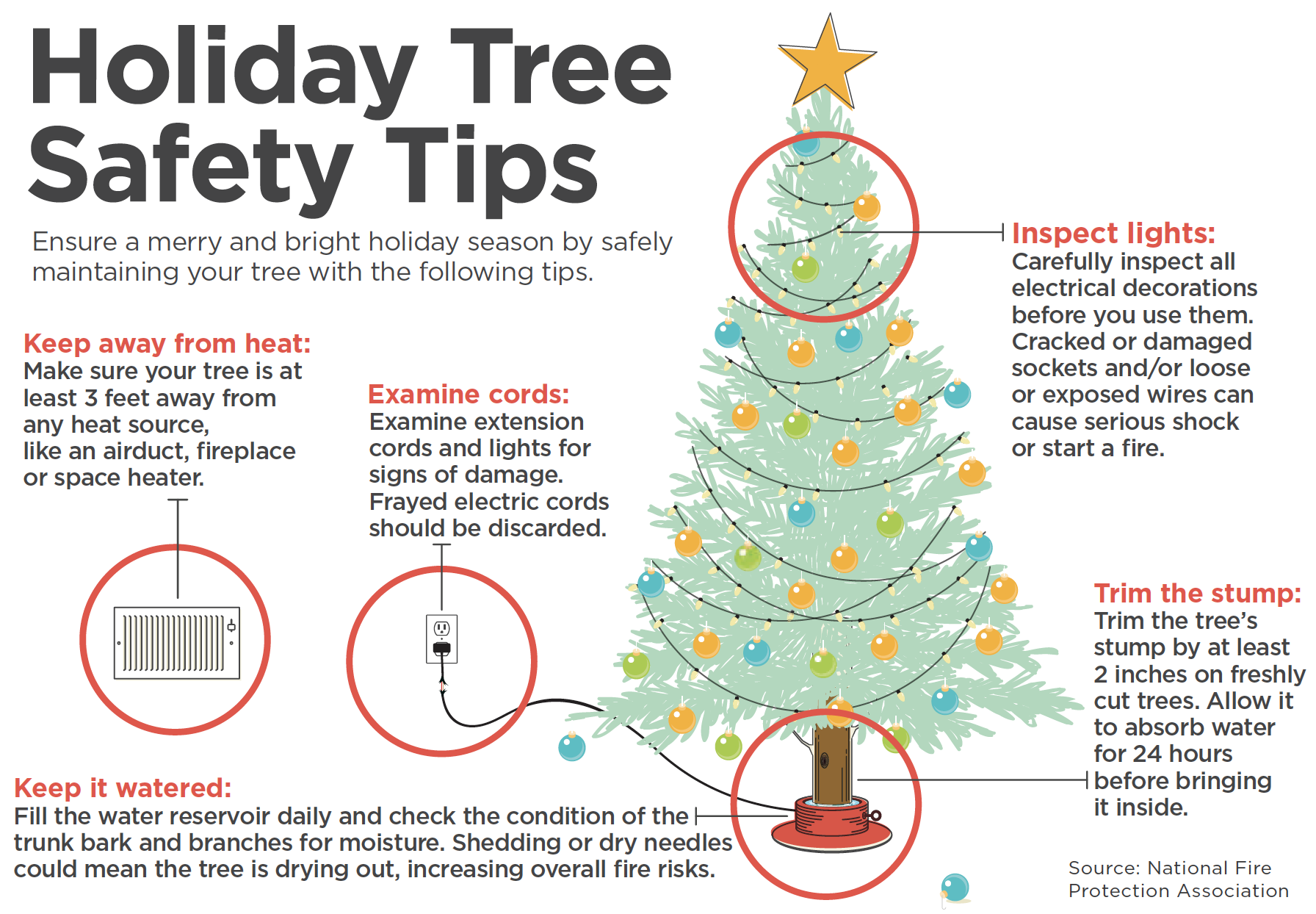Twinkle, twinkle Christmas tree

Tips to reduce the risk of fire hazards of cut trees
About 95 million American households will host at least one Christmas tree this holiday season, and 81% of those trees will be artificial.
Many prefer a real tree, one cut from the field or purchased from a store or lot. Whether your tastes run to firs, spruces, pines or cedars, consider cutting your tree from a local tree farm to ensure it is fresh. Otherwise, that pre-cut tree was likely cut a month or more ago.
Dryness, electric light malfunctions and trees located too close to heating sources can make for a deadly combination. According to the National Fire Protection Association (NFPA), fires involving Christmas trees cause an estimated $13 million annually in property damage.
Susan McKelvey, communications manager for the NFPA, suggests you test a cut tree by grabbing a branch and running your hand along it and see if any needles fall.
Safe positioning
The NFPA recommends that trees be set up at least 3 feet away from any heat source, like a fireplace, heating duct or portable space heater. Trees too close to a heat source are a factor in one of every four such fires.
Live tree safety tips
• Cut 2 inches off stump of tree.
• Water tree for 24 hours prior to bringing into house.
• Position tree 3 feet from heat source.
• Water, water, water—refill the water reservoir daily.
• Check tree daily for needle loss, dryness.
• Use indoor lights tested by UL or ETL/ITSNA labs.
• Consider LED lights, with less heat and fire risk.
• Turn off all Christmas lights at bedtime.
A well-maintained, cut tree can last two to four weeks, depending upon the species. The longer the tree is inside, the more likely it will dry out and pose an increased fire hazard.
Enjoy your twinkling lights and tree, but be safe!

